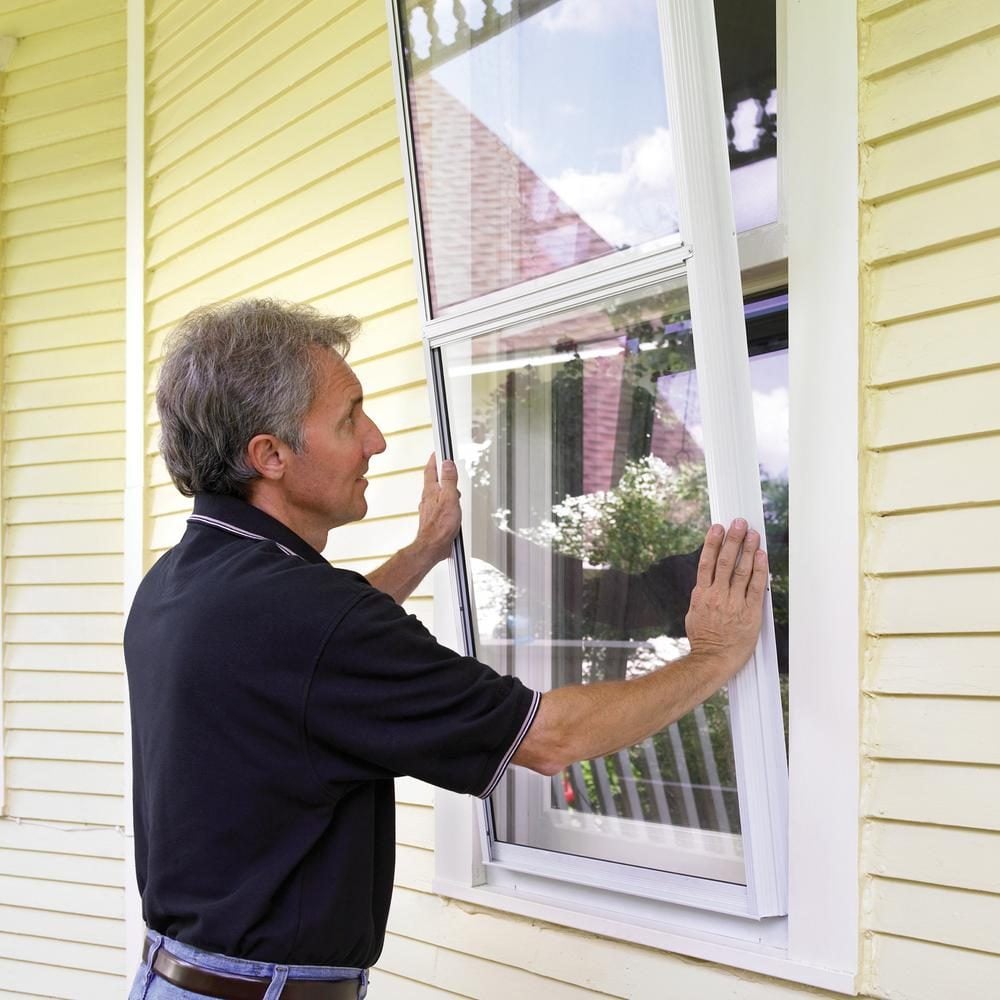Storm windows, installed on the exterior or interior of existing windows, are a relatively inexpensive way to insulate your home and prolong window life. So, what is a storm window? And why do people use them? Decide if storm windows are right for you with this storm window buying guide.
What Is a Storm Windows?
What is a storm window? It’s not all that different from a regular window. Storm windows, with frames made of wood, aluminum or PVC (vinyl) and glass or acrylic sheet glazing, are inserted in the interior or exterior frame of existing windows. They’re often used on dwellings with older, single-pane windows because they offer an extra layer of insulation and soundproofing.
They may extend the life of existing windows, keep homes cooler in the summer and warmer in the winter, and allow homeowners to postpone the expense of replacing windows altogether. Storm windows are available at most larger home improvement stores. These are our picks for the six best storm windows.
Types of Storm Windows
Interior Storm Windows. Usually made with vinyl or aluminum frames, interior storm windows fit into the interior window frame. They may have solid glass, acrylic sheet or durable vinyl panels that are mounted for a few months at a time, or they may be simple single-hung windows that can open.
Because they are fitted with weatherstripping, they keep out window drafts and are especially suited to single-pane windows. Interior storm windows are also the easiest to install. They usually just pop into place and stay in position thanks to magnets, flanges or compression. They’re also a good option for people living in apartments or multi-story homes who can’t or don’t want to access their exterior windows from a ladder.
Exterior Storm Windows. Available with vinyl, aluminum and wood frames, exterior storm windows fit into the outside of a window frame. They come in various configurations, most often with a screen.
- Two-track storm windows have a fixed half-pane of glass and a fixed screen on the same track. On a second track, a movable glass pane slides up to allow in air.
- Two-track slider windows also have a fixed half-pane, fixed screen and a movable pane, but open horizontally instead of up and down.
- Triple-track storm windows have two panes of movable glass and a movable screen, all in separate tracks. They allow for flexibility in ventilating your home and for objects to be passed through the open window.
- Basement storm windows have a single pane that must be popped out in order for air to enter through the screen.
Exterior storm windows protect existing windows from harsh weather and block cold air from entering the home. If installed over vinyl-frame windows, they can keep the frame color from fading. They are not considered as airtight or insulating as interior storm windows because they have “weep holes” which allow moisture to escape rather than build up as condensation between the two windows.
Many exterior storm windows are fitted with Low-E glass. The thin coating on the glass helps retain heat in the winter by reflecting some of the infrared heat back to the inside. In summer, the coating helps reduce cooling costs by preventing some infrared energy from getting into the house.
Exterior storm windows can also change the outside appearance of the home. However, because they can be permanently installed instead of being put up and taken down season to season, they are considered more hassle-free than interior storm windows.
Storm Window Costs
Most homeowners invest in storm windows to avoid or postpone replacing older, drafty or otherwise deteriorated windows. Consider that an entry-level, single-hung vinyl window measuring roughly 35-in. x 47-in. inches costs about $170. The same size window with a wood frame, double-hung and Low-E glass but no screen costs $415.
By contrast, the same size two-track, exterior storm window with Low-E glass costs $100. An interior vinyl storm window panel from windowinserts.com costs about $80. While interior and exterior storm windows can cost considerably more than the prices quoted here, the math is still the same: Replacing a houseful of windows is a lot more expensive than buying storm windows.
Storm Window Installation
Interior storm windows are easy to install and require minimal to zero tools. Most are pushed into place and are just as easy to remove.
Exterior storm windows usually come with holes predrilled so that they can more easily be attached to window frames. Anyone with basic DIY home improvement skills should be able to handle storm window installation. Required tools include a screwdriver (screws may or may not be included with the window), a putty knife, a caulk, and a caulk gun. Here’s what you need to know about hurricane windows.
If you have second-story or higher windows and you don’t want to work on a ladder, the store where you purchased the windows likely offers installation. Or you can find a pro to do the job.
ⓘ
Storm Window Maintenance
Storm windows require no special maintenance other than regular cleaning. Pop out interior storm windows and wipe them down with a soft cloth. Check the manufacture’s guidelines before using glass cleaner or other chemicals on vinyl or acrylic sheet window panels.
To clean exterior storm windows, open the existing window and vacuum the interior sill and tracks. Wash window interiors per the manufacturer’s suggestions. To clean the outside of exterior storm windows, brush off debris with a broom or cloth, then clean the glass accordingly.





















